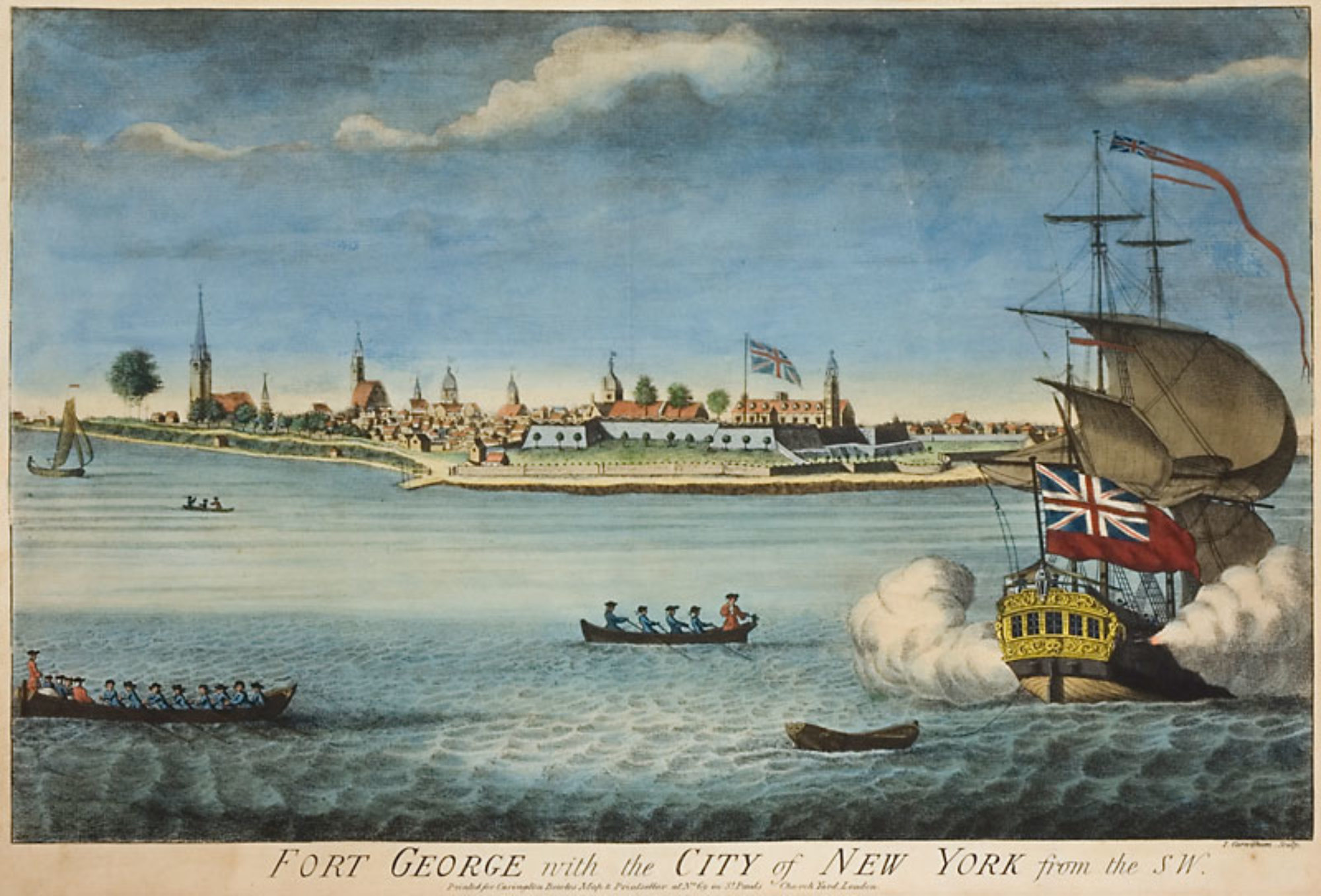Cattle

Painting courtesy of the Staten Island Historical Society (Richmondtown)
The First Continental Congress had inflicted a severe boycott on Staten Island, in which most of the Islanders protested and attempted to thwart by smuggling their produce and livestock to the lucrative markets in New York, New Jersey and Pennsylvania. The leading protesters were also the most prominent of Loyalist families who had profited from these local markets and the British markets overseas. Christopher Billopp, one of the largest landowners, his father-in-law, Benjamin Seaman, the Richmond County Jurist, Richard Connor, member of the Moravian Church and eventual Captain of the Third Brigade of Billopp’s Loyalist Militia, Aaron Cortelyou, another member of the Moravian Church (and a future spy for the British), John Journeay, the county clerk, Paul Michaeu and Richard Lawrence, the master carpenter of Staten Island’s shipyards were the most outspoken against this boycott.
When General Charles Lee inadequately fortified Staten Island in February in preparation of a British invasion, he proceeded to attempt to have all of the livestock rounded up and transported off of the Island to New Jersey. General Livingston and Col. Heard then arrived with roughly 1,000 militia on the Island to secure the livestock over a four-day period in mid-February 1776.
Staten Islanders were so enraged at the soldiers’ appearance on the Island, they began to harass and threaten the soldiers with death. Col. Heard had had enough. He arrested four prominent Loyalists: Richard Connor, Isaac Decker, Abraham Harris and Minah Burger and sent them to Elizabethtown, New Jersey, to await trial. All four were eventually acquitted.

Lord Sterling was then sent by Washington to continue shoring up New York’s defenses, including what had been unfinished by General Lee on Staten Island. General Stirling began surveiling the Loyalist residents and made one an example by arresting John James Boyd for expressing his Loyalist sympathies.

By April 1776, the Island was still not properly fortified, prompting the new General in charge of New York’s defenses, Israel Putnam, to send three companies of Virginia and Maryland riflemen to the Watering Place, in an attempt to block the British Navy from procuring water for its ships. The soldiers continued to harass and insult the Loyalist Islanders, including Captain Alexander MacDonald’s wife–the soldiers rummaged through her house and pillaged her farm. Other farmers homesteads were ransacked of their produce, livestock and woodlands.
George Washington, upon finally arriving in New York and taking command of the fortifications, had all of the heights of Staten Island secured with signal stations. He again ordered “the Removal of the Stock of Cattle and Horses” to prevent the enemy from obtaining these important supplies:
New York July the 3d 1776
Sir
“Since I had the honor of addressing you and on the same day, several Ships more arrived within the Hook, making the number that came in then a hundred & Ten, and there remains no doubt of the whole of the Fleet from Hallifax being now here.
Yesterday evening fifty of them came up the Bay, and Anchored on the Staten Island side. their views I cannot precisely determine, but am extremely apprehensive as part of ’em only came, that they mean to surround the Island and secure the Stock upon It. I had consulted with a Committee of the Provincial Congress upon the Subject before the arrival of the Fleet and they appointed a person to superintend the business and to drive the Stock off. I also wrote Brigr Genl Herd and directed him to the measure, lest It might be neglected, but am fearfull It has not been affected.
. . .
Esteeming It of Infinite advantage to prevent the Enemy from getting fresh provisions and Horses for their Waggons, Artillery &c. I gave orders to a party of our men on Staten Island since writing Genl Herd to drive the Stock off, without waiting for the assistance or direction of the Committees there, lest their slow mode of transacting business might produce too much delay and have sent this morning to know what they have done. I am this Minute informed by a Gentleman that the Committee of Eliza. Town sent their Company of Light Horse on Monday to effect It, and that some of their Militia was to give their aid yesterday—he adds that he was credibly told last night by part of the Militia coming to this place that yesterday they saw a good deal of Stock driving off the Island & crossing to the Jerseys. If the business is not executed before now, It will be impossible to do It. I have the Honor to be with Sentiments of the greatest Esteem Sir Your Most Obedt Servt”
Go: Washington

Kidnappers
Sources: Phillip Papas, “Richmond County, Staten Island” in Joseph S. Tiedemann and Eugene R. Fingerhut, ed., The Other New York: The American Revolution Beyond New York City, 1763-1787 (Albany, NY, 2005)
“From George Washington to John Hancock, 3 July 1776,” Founders Online, National Archives, accessed September 29, 2019, https://founders.archives.gov/documents/Washington/03-05-02-0127. [Original source: The Papers of George Washington, Revolutionary War Series, vol. 5, 16 June 1776 – 12 August 1776, ed. Philander D. Chase. Charlottesville: University Press of Virginia, 1993, pp. 191–194.]

